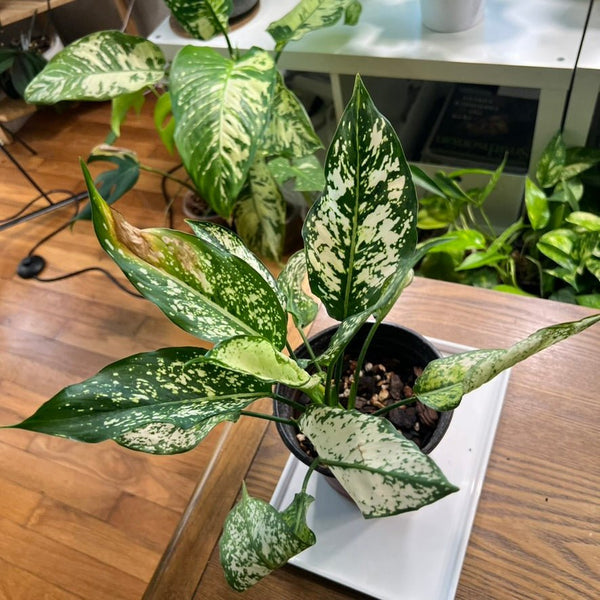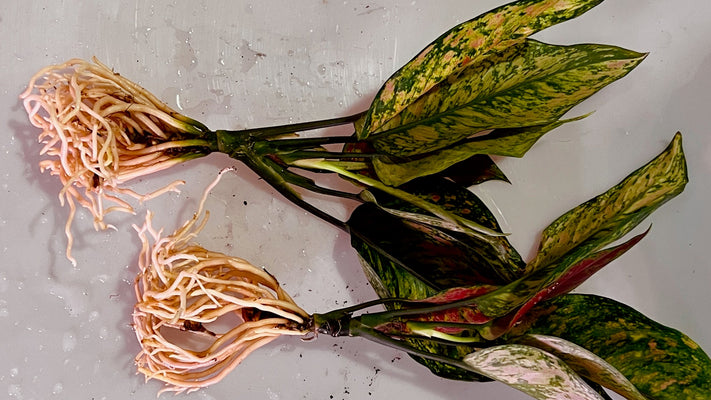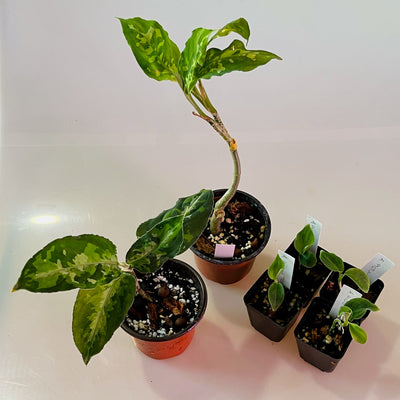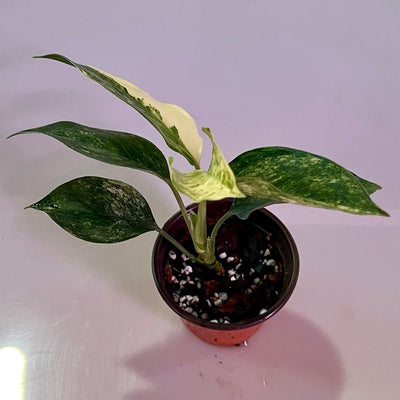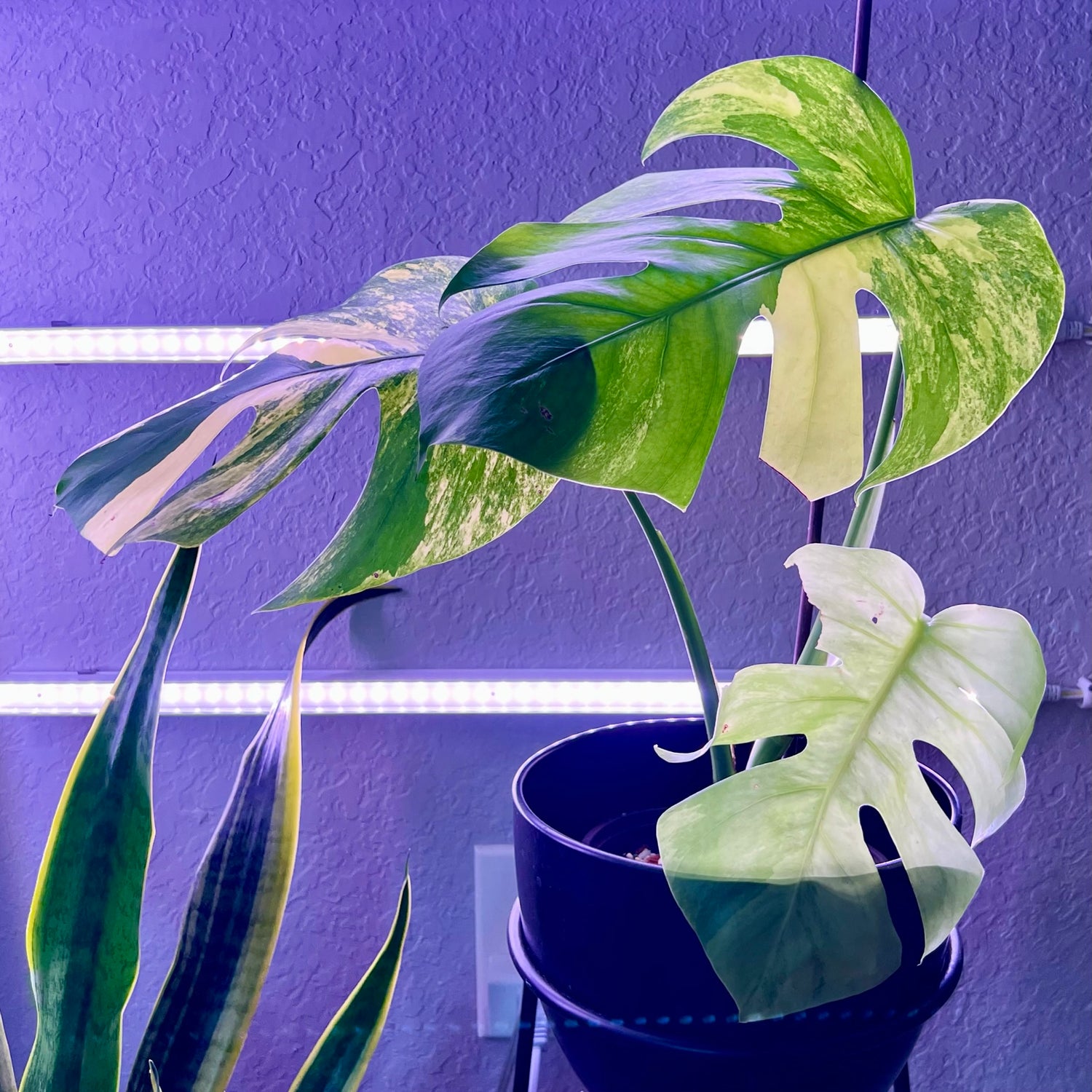Aglaonema Snow White
Published: Mar 14, 2023
• Updated: Sep 16, 2023
A comprehensive guide to Aglaonema Snow White including care instructions, where to purchase, and handpicked resources for further learning.
By: Nalin Singapuri
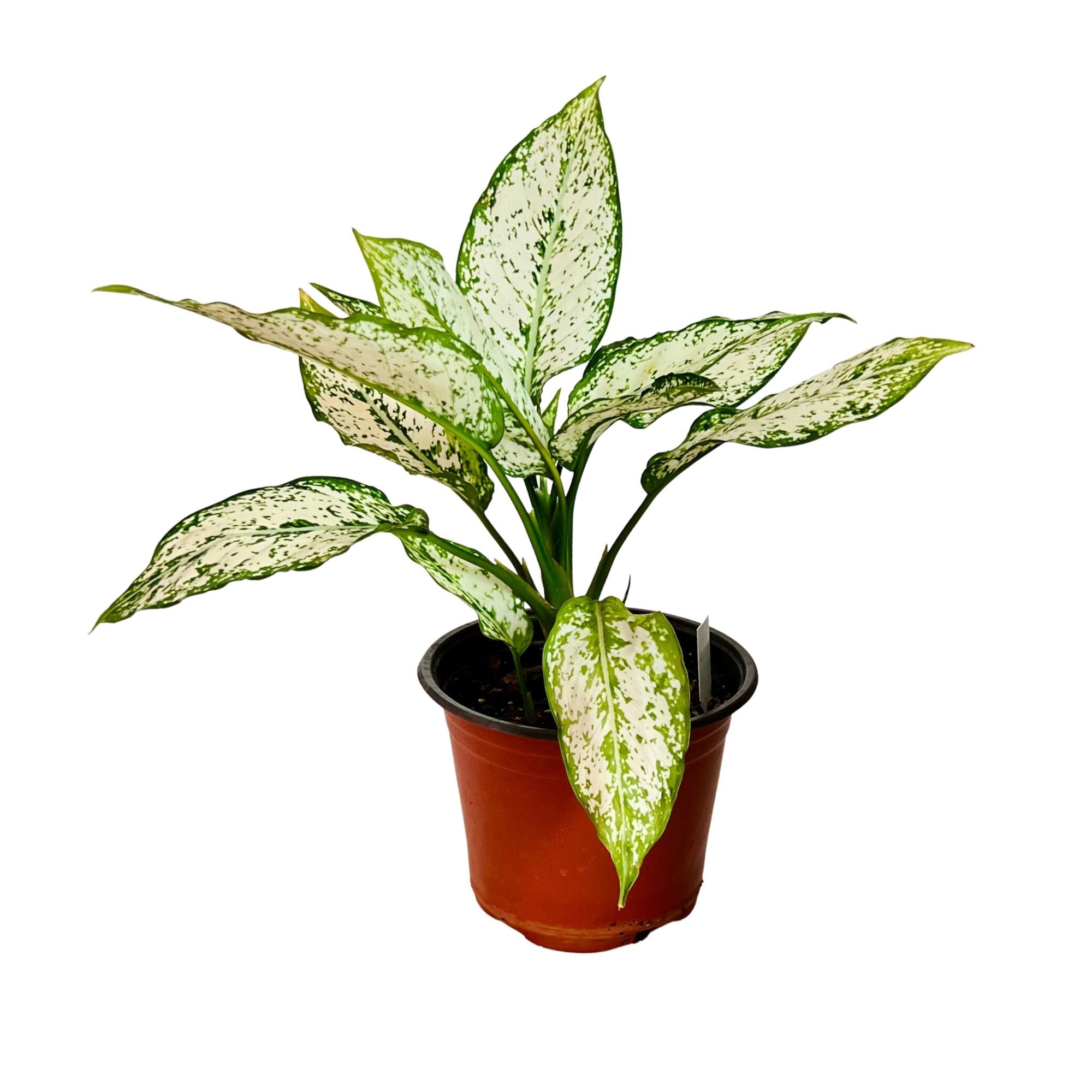
Table of Contents
Aglaonema Snow White
- Where to buy an Aglaonema Snow White
- Characteristics
- Caring for your Aglaonema Snow White
Shop: Aglaonema Snow White
And similar species
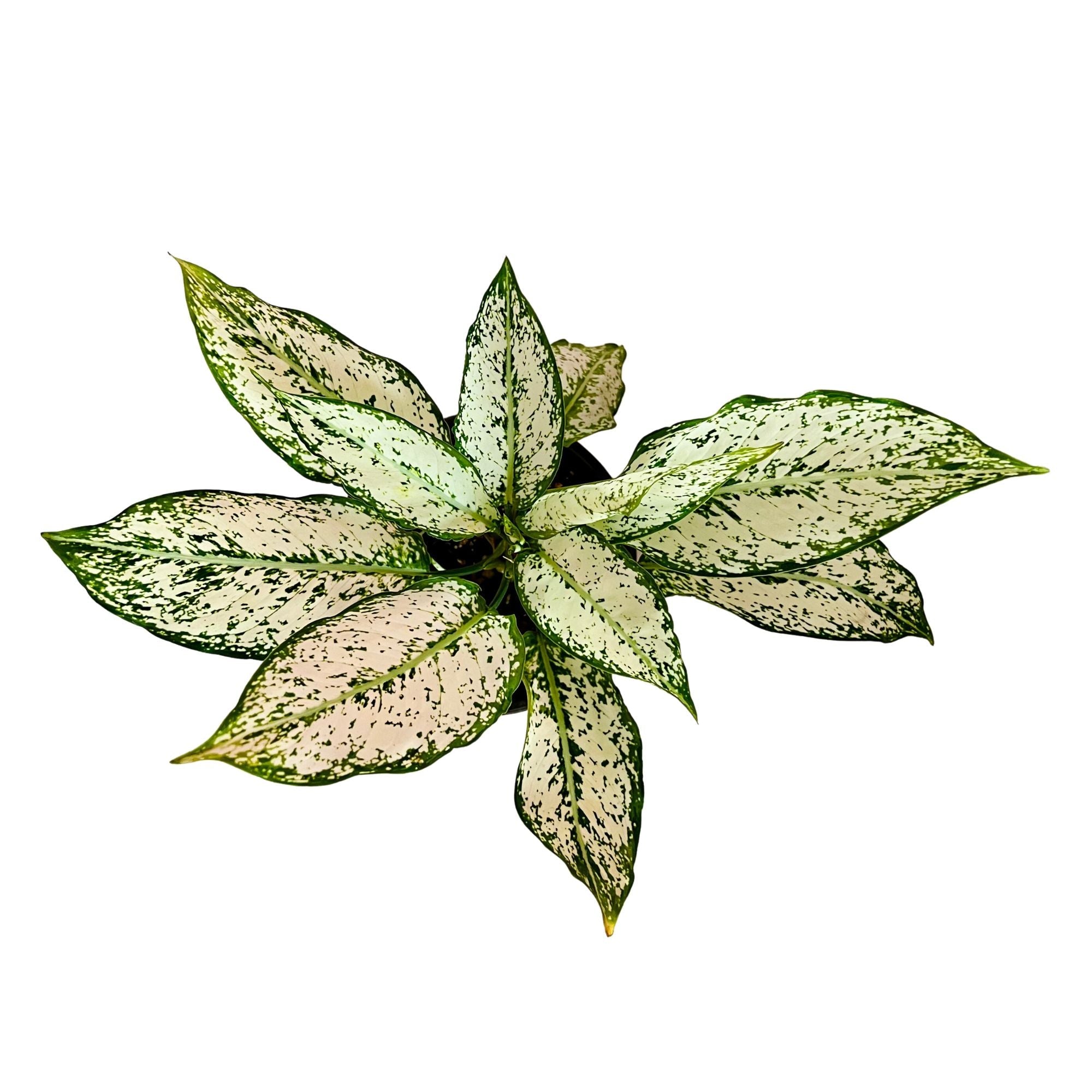
Aglaonema Snow White Characteristics
Scientific Name:
Aglaonema 'Snow White'
Common Name(s):
Aglaonema Snow White, Chinese Evergreen
Native Environment:
Volcanos
of Nias, Sumatra
Variegation:
Variegated (stable)
Toxicity:
Toxic
Growth:
Terrestrial
Aglaonema Snow White Care
Aglaonema Snow White, also known as Chinese evergreen, is a popular indoor plant known for its attractive foliage and ease of care. Here are some care tips for keeping your Aglaonema Snow White plant healthy.
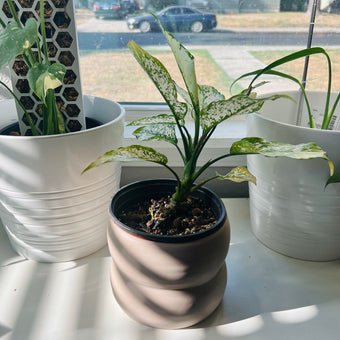
Spotted Chinese Evergreens prefer a sunny spot a foot or two from a window
Light
Aglaonema Snow White plants prefer bright, indirect light. Avoid placing her in direct sunlight, as this can burn her leaves. Chinese Evergreens can also tolerate medium light conditions, but will not grow as well.
Water
Use a finger to probe the top inch of soil and water your Aglaonema Snow White when she feels dry to the touch. Soak throughly, let water run through drainage holes in the pot. Do not overwater, as this can lead to root rot. Ensure proper drainage and prevent water from pooling in the pot. Make sure to use a planter with drainage holes, which can be nested inside of a decorative planter if desired.
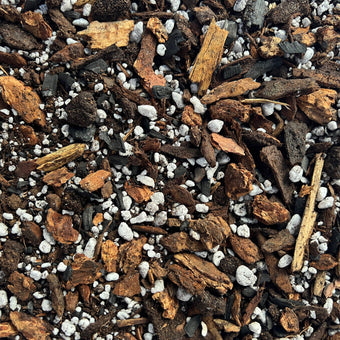
rich well-draining soil is great for the Aglaonema Snow Whites roots
Soil
Chinese Evergreens love a rich, well draining soil with chunky bits to help oxygenate the roots. A mixture of 1/3 orchid bark, 1/3 perlite and 1/3 compost works well. Our Philodendron Friday Potting Mix is suitable for most aroids and augments these ratios with additional ingredients like charcoal and worm castings to help supply added nutrients.
Plants with thicker roots like Aglaonema Snow Whites grow well in a substrate like LECA. Care must be taken to ensure that she gets proper nutrients.
Finally, damp sphagnum moss is a great fit for rooting new cuttings or sick Chinese Evergreens. Leave in moss only until secondary roots develop and them move to a different substrate.
Fertilize
Fertilize your Aglaonema Snow White plant once a month during the growing season (spring and summer) with a balanced, water-soluble fertilizer.
Humidity
Chinese Evergreens prefer high humidity (around 70% in their native habitat). To increase humidity, you can place a humidifier nearby, group the plant with other plants or utilize an enclosed plant cabinet or greenhouse. She will tolerate average household humidity levels, lower the humidity slowly over time to help her acclimate.
Repotting
Repot your Aglaonema Snow White plant every 1-2 years, or when it becomes root-bound. Transfer to a pot with drainage holes thats an inch or two larger.
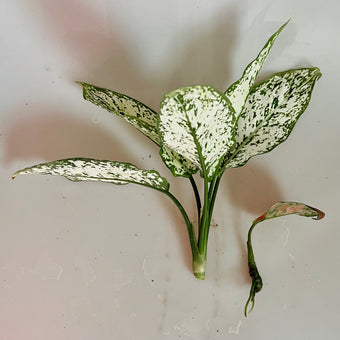
fresh Aglaonema Snow White top cutting, next to a smaller rooted Aglaonema Kochin Pink cutting
Propagation
Chinese Evergreens propagate via node cuttings. Select an area with a few nodes and remove it from the mother with clean scissors. Trim excess leaves and root in water or sphagnum moss.
Pruning
Trim any yellow or brown leaves off your Aglaonema Snow White as they appear. You can prune the plant to control its size and shape.
Zone
Chinese Evergreen can be grown outdoors in USDA Hardiness Zones 10 to 12.
By following these care tips, your Aglaonema Snow White plant should thrive and continue to add beauty to your space.
More Plant Care Guides
Plants Similar to Aglaonema Snow White
Resources and Further Reading

Nalin Singapuri
Self appointed Mayor of Plantytown, the ultimate "Plant Whisperer" and the proud overlord of a jungle disguised as a nursery. With a green thumb so legendary, even the plants line up for selfies with him. 🌿📸
When he's not talking chlorophyll with his leafy friends, or writing engrossing articles about Aglaonema Snow Whites you'll find him nurturing his nursery like it's his own personal garden of Eden.





